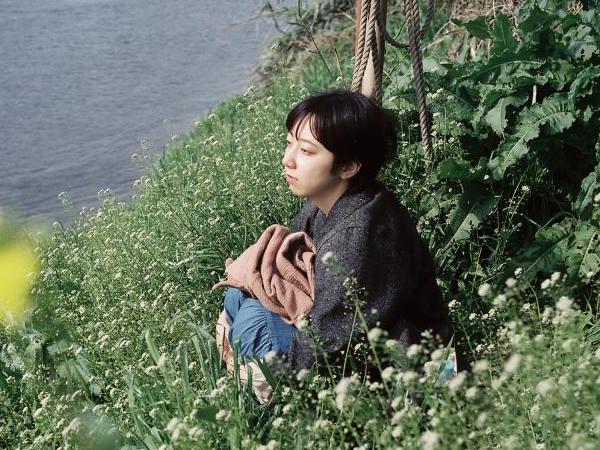
Starting to work part-time at a cafe after quitting her job as a curator at an art museum, Sachi moves into an apartment recommended by a regular at the cafe. The whole renewal of her job and address is an attempt to overcome the suicide of her partner, Yuki, when they were living together. Yet, while Yuki can never be seen again, her image remains in Sachi’s mind and the illusion still appears in front of her eyes.
“A young woman takes possession of an apartment and on the doorstep, greets the former tenant who’s chosen not to leave a forwarding address. This woman thus enters the film and haunts it all the way through as we follow her endlessly, present in each sequence and magnificently played by Chika Araki with astounding subtlety, mobility and precision. Yet we find out very little about her character: Kyoshi Sugita is obviously more interested in poetry than novels. Inspired by a tanka written by a famous Japanese poet, Higashi Naoko, here – rare indeed – we have a film that abandons the lazy, tired concept of plot to progress by successive epiphanies. What’s the basis of this ability to construct, in a continuous stream, scenes that are each a distinct explosion? There’s no recipe – it’s the organisation of surprises, each different, that allows for the alternation of deliberately heterogeneous moments: teatimes, lunches, daydreaming, sleep, wandering round town (in fact, a lot of people are seeking their way), from an energetic floor-painting sequence to a vaudeville piece with a character hiding in the wardrobe. But the frame undoubtedly plays a role, and one character often conceals another, as though one of the rules here were the possibility of superimposing, not to mention the striking significance of windows, doors and thresholds. And the sound, too, set into the image and present right from the start, is the focus of meticulous care, a way of splitting the image, of making it quiver, with other people passing through. A pure, cinematographic poem, but one whose dry, unadorned poetry continually niches in different places in the film, this is a grand moment of emotion, this is cinema, uncompromising and reinvented!”
Jean-Pierre Rehm
“My way of making films is probably different from the general method. I think most people start their different preparations after having originally completed the script, but in my case, I write the script at the end, after having settled the casting, the location scouting, and the shooting schedule. If Chika is at the heart of the film, then those people should probably be her coactors, and this location will probably be good… that’s how I proceed. Because I only finally start thinking about the film’s contents when I’ve negotiated through all of that, I write a script aimed at my actors and locations. My scripts are filled with secrets, but none of the actors, starting with Chika, asked me anything about the lines. As I have everyone look for the answers within themselves and show them to me on set, my role was to decide to a certain extent on the characters’ movements during each scene, to prepare everyone’s props and food (there were no assistant directors, producers, set designers, or drivers on this film. I did everything. That’s possible when you’re ready to work with very few people), to keep on schedule, to sit next to the camera and check the acting, lighting, wind, to pay attention to the sounds heard on set, and to identify moments when the script doesn’t work and fix it as quickly as possible. As it was basically Chika’s first time acting in a film, it seems she thoroughly enjoyed every day of it. Later, she often slept on set. As I saw that she would fall asleep in some corner of the set as soon as I took my eyes of her, I thought, isn’t she relaxed ? I even started filming the scene with her like that once. She woke up at some point, sensed in an instant that the camera was rolling, and went on with her performance.”
Kyoshi Sugita1
« Haruhara san’s Recorder est le résultat d’un modus operandi expérimental, où l’on peut fonder deux heures de film sur une poésie (un tanka de Higashi Naoko), où l’on peut inverser l’ordre standard de la création (« je préfère écrire le scénario à la fin, après avoir choisi les acteurs, les lieux et le plan de tournage »), où l’on peut concevoir qu’aucun élément n’ait de sens figé ou ne serve de commentaire au déroulement des événements. Le film de Sugita est une véritable œuvre ouverte : une histoire sculptée à partir de l’agencement d’intuitions et de moments réels captés ou transposés, que le réalisateur essaye de définir le moins possible à travers les dialogues ou le montage. Même le titre du film n’est pas figé : il est question d’une chanson dans le titre japonais, et d’une flûte à bec dans le titre international. Tous les éléments sont présentés par Sugita de manière humble et cohérente avec sa méthode de travail. On constate que même la musique originale qui revient plusieurs fois, un drone composé par Skank, semble vouloir n’être qu’une pure apparition (comme la jeune femme que le personnage de Araki voit dans son appartement) qui ne veut pas commenter un plan ou le charger d’une émotion définie. »
Stefano Miraglia, Occitane Lacurie et Barnabé Sauvage2
- 1Kyoshi Sugita, “Interview Haruhara San's Recorder,” interview by Nathan Letoré.
- 2Occitane Lacurie, Barnabé Sauvage, Olivier Cheval et Stefano Miraglia, « FID Marseille 2021, » Débordements, 4 août 2021.

